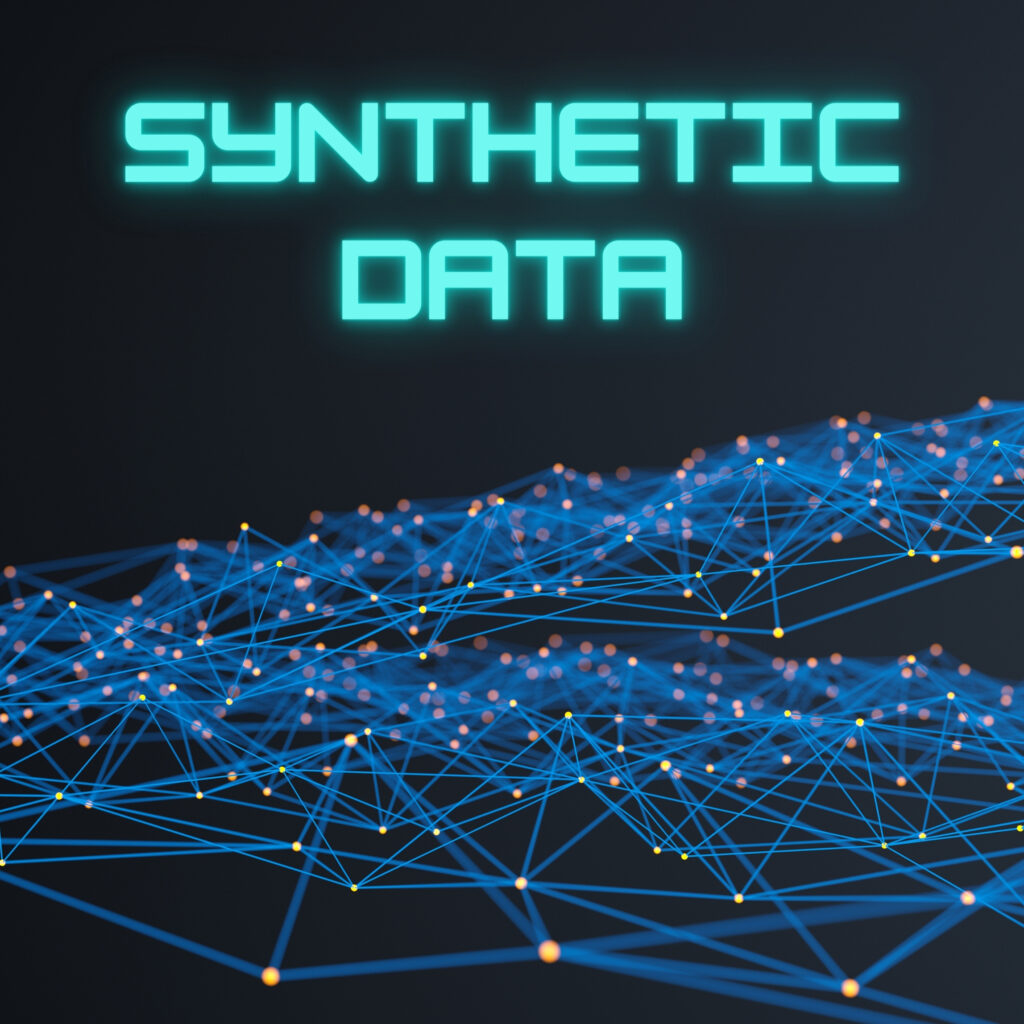We live in the age of big data. Whether it is social media platforms, retail and e-commerce, telecommunications, healthcare or manufacturing an estimated 2.5 exabytes – or 2.5 quintillion bytes – of data is generated each and every day.
The ability to crunch and make sense of these data was long the limiting factor. However, with the adoption of AI we now sometimes find ourselves in the position of having too few data to feed and train those powerful algorithms. Enter synthetic data, or artificially generated data, that can make up for the shortfall. In this blog we explore what synthetic data is, how it is used in manufacturing and what the opportunities and risks are.
Understanding Synthetic Data
Synthetic data refers to artificially generated data that mimics real-world data. It is created through algorithms and simulations rather than collected from actual processes. In manufacturing, synthetic data can take the form of images, sensor readings, or operational metrics that are crucial for training machine learning models.
The Role of Synthetic Data in Visual Inspection
Visual inspection is a cornerstone of quality control in manufacturing. Traditionally, this process involves human inspectors examining products for defects or deviations from standards. However, human inspection is inherently limited by factors such as fatigue, subjective judgment, and the high costs associated with labor-intensive processes (not even mentioning the challenge associated with hiring and keeping personnel).
Machine learning and computer vision have emerged as powerful tools for automating visual inspection. However, these technologies require vast amounts of labeled data to train accurate models. This is where synthetic data proves invaluable.
Advantages of Synthetic Data for Visual Inspection:
- Abundance of Training Data: Synthetic data can be generated in large quantities, providing ample training material for machine learning models. This is especially useful in scenarios where collecting and labeling real-world data is impractical or expensive.
- Data Diversity: Synthetic data can cover a wide range of scenarios, including rare or extreme defects that might not be frequently encountered in real production environments. This diversity ensures that models are robust and capable of identifying a broad spectrum of issues.
- Annotation Accuracy: Synthetic data is inherently labeled, eliminating the need for manual annotation. This not only speeds up the data preparation process but also ensures that the labels are precise and error-free.
- Cost Efficiency: Generating synthetic datasets is often more cost-effective than collecting real-world data, especially in controlled environments or for new product lines where historical data may be sparse.
Enhancing Quality Control with Synthetic Data
Quality control extends beyond visual inspection to encompass a wide array of metrics and parameters that determine product quality. Synthetic data enhances quality control in several key ways:
- Simulating Production Variability: Manufacturing processes can be influenced by numerous variables such as machine calibration, material properties, and environmental conditions. Synthetic data can simulate these variations, helping to train models that are resilient to real-world production fluctuations.
- Accelerating Innovation: When launching new products, there is often limited historical data to inform quality control processes. Synthetic datasets allows manufacturers to simulate potential issues and refine quality control protocols before full-scale production begins.
- Predictive Maintenance: By generating synthetic sensor data, manufacturers can train predictive maintenance models to anticipate equipment failures and schedule timely interventions, thereby minimizing downtime and maintaining consistent product quality.
Case Study: Automotive Manufacturing

Consider the automotive industry, where precision and reliability are paramount. Traditional visual inspection methods struggle to keep up with the complexity and volume of modern automotive components. By leveraging synthetic data, automotive manufacturers can train AI-based systems to detect subtle defects in parts such as engine components, body panels, and electrical assemblies.
For instance, a synthetic dataset might include images of rims with varying types and degrees of scratches, dents, and paint defects. By training a model on this diverse dataset, the inspection system becomes adept at identifying imperfections that might be missed by human inspectors or traditional methods.
Find a use case related to defect detection on Class A automotive surfaces in our use case library (no synthetic data were used, but the use case exemplifies a very challenging visual inspection problem).
Case Study 2: Bootstrap Construction of Defect Detection Training Model
Building a training library of golden and defect units is the first critical steps to training an AI model for applications in visual inspection. While it is often easy to collect a large enough number of images of good products in a relatively short period of time, it can be very time consuming to collect images of defects, especially rare defects. Synthetic data can be used to generate images of defects products which can then be used to start training the model. As more products are analyzed over time the real-world defects are added and the model can be further refined. Synthetic data are therefore a very handy tool to accelerate model training
As Always There Are Downsides: Potential Risks of Synthetic Data
While the benefits of synthetic data are compelling, challenges remain. One of the main risks associated with them – not just in manufacturing, but in general – is that synthetic data might eventually vastly outnumber real-world data. This shift is problematic because it could impact the effectiveness and reliability of machine learning models due to the following issues:
- Overfitting to the characteristic of the synthetic data – this can impact the ability of the AI algorithms to generalize when applied to real-world data, which may exhibit nuances and variations not captured in synthetic datasets. This would result in poor performance of the models in real-world data and to both false-positive and false-negative results.
- Insufficient coverage of the real-world – synthetic data, while diverse, may not fully capture the unpredictable and varied nature of real-world manufacturing environments. Certain defects or anomalies that occur in actual production might not be adequately represented in synthetic datasets. These gaps between synthetic and real-world data can result in models that are ill-prepared for unexpected issues, reducing the overall robustness of quality control systems.
- Bias in synthetic data – synthetic data is generated based on predefined parameters and models. If these underlying parameters are biased or incomplete, the resulting synthetic data will also be biased. This bias can skew the training process and lead to models that do not accurately reflect real-world variability and can therefore fail to detect certain types of defects or disproportionately highlight others, leading to inconsistent quality control and potential production inefficiencies.
Ensuring that synthetic data accurately represents real-world conditions is crucial for the effectiveness of the models. Additionally, integrating synthetic data with real-world data to create hybrid datasets can further enhance model performance and is critical to avoid over-reliance on synthetic data.
Where Does This Leave Us?
Synthetic data is an important innovation and relevant to applications in manufacturing such as visual inspection and quality control. Synthetic data provide abundant, diverse, and accurately labeled data and the ability to simulate a wide range of conditions and defects will make it an indispensable tool for training robust machine learning models. However, an over-reliance on synthetic data at the expense of real-world data has its own risks and the challenge lies in carefully balancing the need to train AI models with large, diverse (synthetic) data sets and making sure they do not take over and skew what’s happening in the real world.

